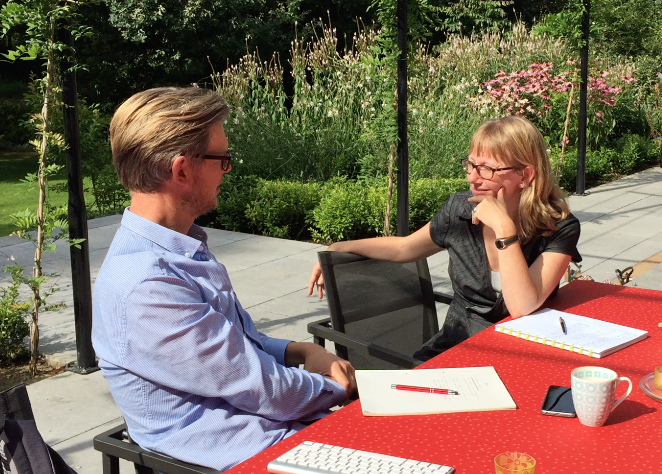Solution Focus Clues

Solution Focus Clues Version 1.2
These Clues are the original work of the Association for Solution Focused Consultant and Trainers. SFIO is now responsible for sustaining and developing the Clues.
The clues are revised at the Annual General Meeting: any contributor can suggest changes to them, however, Reviewed SF Practitioners decide on the amendments.
How do we NOTICE that a piece of work is using the SF approach?
In the SFIO review process, work is peer-reviewed to observe and build the use of the SF approach in organisational settings. These “Clues” are offered to help with the SFIO review process.
We wish to suggest many of the different ways of noticing that someone is using the SF approach. We do not seek or claim a complete description of what SF is or is not. Instead, we seek a kind of ‘family resemblance’, with traits that might be visible signs of an SF approach. This is a list of ways that we might notice the SF approach in action. Of course, not all of these need to be present for a piece of work to be a good piece of solution focused work.
Basic position of the practitioner
- Change is happening all the time – our role is to find useful change and amplify it
- Resource orientation rather than deficit orientation
- A stance of
- having as few assumptions about the client as possible
- deeming clients to be the expert on their own lives and desires
- A respectful, non-blaming and co-operative stance
- An interactional view (inbetween not “inside” a person)
- Working towards their clients goals from within their client’s frames of reference, while keeping their own (external) perspective
- Treating each case as different and developing the process according to what the client says rather than imposing a fit into a theoretical or conceptual framework “–the process emerges differently each time based on what the clients say/do/want
Tools / “What it tends to look like”
Remember, this is not a check-list – not all of these need to be observed.
- Building conversations on the basis of the client’s language, metaphors, stories and behaviour
- Using simple, concrete language, “staying on the surface”, promoting interactional descriptions rather than mentalistic explanations
- Promoting descriptions in specific, small, interactional and positive terms (presence of solutions rather than absence of problems, start of something new rather than stopping something)
- Seeking useful change and positive difference in all phases of the process, from before the first session, between sessions and afterwards
- Helping the clients build a description of their own “preferred future” using the miracle question or other “future perfect” oriented questions
- Establishing elements of the “preferred future” which are already happening using scaling questions, exception questions, coping questions, counters questions and other methods
- Identifying and commenting on client’s resources, offering compliments and tasks appropriately
- Seeking and amplifying instances of useful change and/or positive difference and signs of the customer’s resources between sessions in ways which build the client’s role, agency, efficacy and choice in participating in such change
- Helping the client identify and take small constructive steps in the direction of the desired change
- Working from answer to question, from instance to instance (“I don’t know what question I asked until I hear what the client answers”). The practitioner’s next actions depend on the last helpful answers of the client.
Background / bigger picture
- The focus of SF work is on the interaction between people as described, observed or experienced. We do not introduce systemic or psychological explanatory concepts like inner drivers, inner teams, motivations, systemic structures and hypotheses. Whenever the client is introducing concepts with mentalistic words we use their language to talk about observable signs of progress. For example: “What will you notice when x is better motivated? How will you respond? What will your colleagues notice? What else?”
- Much of the work and the explanations of the work would, therefore, be in terms of ‘people grammar’ – for example “what Mrs V does when she notices Mr W doing something” rather than in mentalistic, molecular or otherwise diagnostic grammar. We focus on what the person wants and we assume that he/she has all the skills to get there. In short the work should focus on what happens between the noses of individuals and avoid being diverted by speculation of what may be happening between the ears of the individual!
- Doing and talking about SF are different activities. While we strive for simplicity in the way we work for clients, we realize that “talking about” SF in a professional way may not seem simple. It is helpful for an SF professional to be able to talk about the difference between an interactional stance as described above and other approaches in a respectful and professional way.
- We would expect to see some reference to Insoo Kim Berg, Steve de Shazer, the Milwaukee group and others (where appropriate), and possibly wider environment / history – e.g. Milton Erickson, MRI. If any roots are honoured, these should be included. Claims that what is being done was created or is ‘owned’ by any individual are therefore clear signs that what is being done cannot be SF in our terms.